Background
With the Distributed Energy Laboratory (DLab), the workgroup for Electrical Power Systems is equipped with test stations for the investigation of fuel cells in single- and multi-cell configuration. In combination with its expertise in the simulation of fuel cell models those models can directly be validated against experimental data gathered from the test stations. DLab combines the following competencies for research into fuel cells:
- Modelling and simulation of PEM fuel cells
- Verification and validation of simulation results
- Recording of polarization curves of fuel cells
- Evaluation of membrane electrode assemblies (MEAs) under reproducible working conditions for the following sizes of active area:
25 cm², 100 cm², and 225 cm² - Measurement and interpretation of the dynamic behaviour by virtue of electrochemical impedance spectroscopy and the current interrupt method
- Development of electrically controllable membranes for PEM fuel cells
- Measurement of the distribution of both current density and temperature along MEAs
Test Station for Fuel Cell Investigations
Test Station for Single Cells
The G100 test station by Greenlight Innovation allows us to characterize single cells as well as short stacks of up to 10 cells. The following table provides an overview of the properties of the test station.
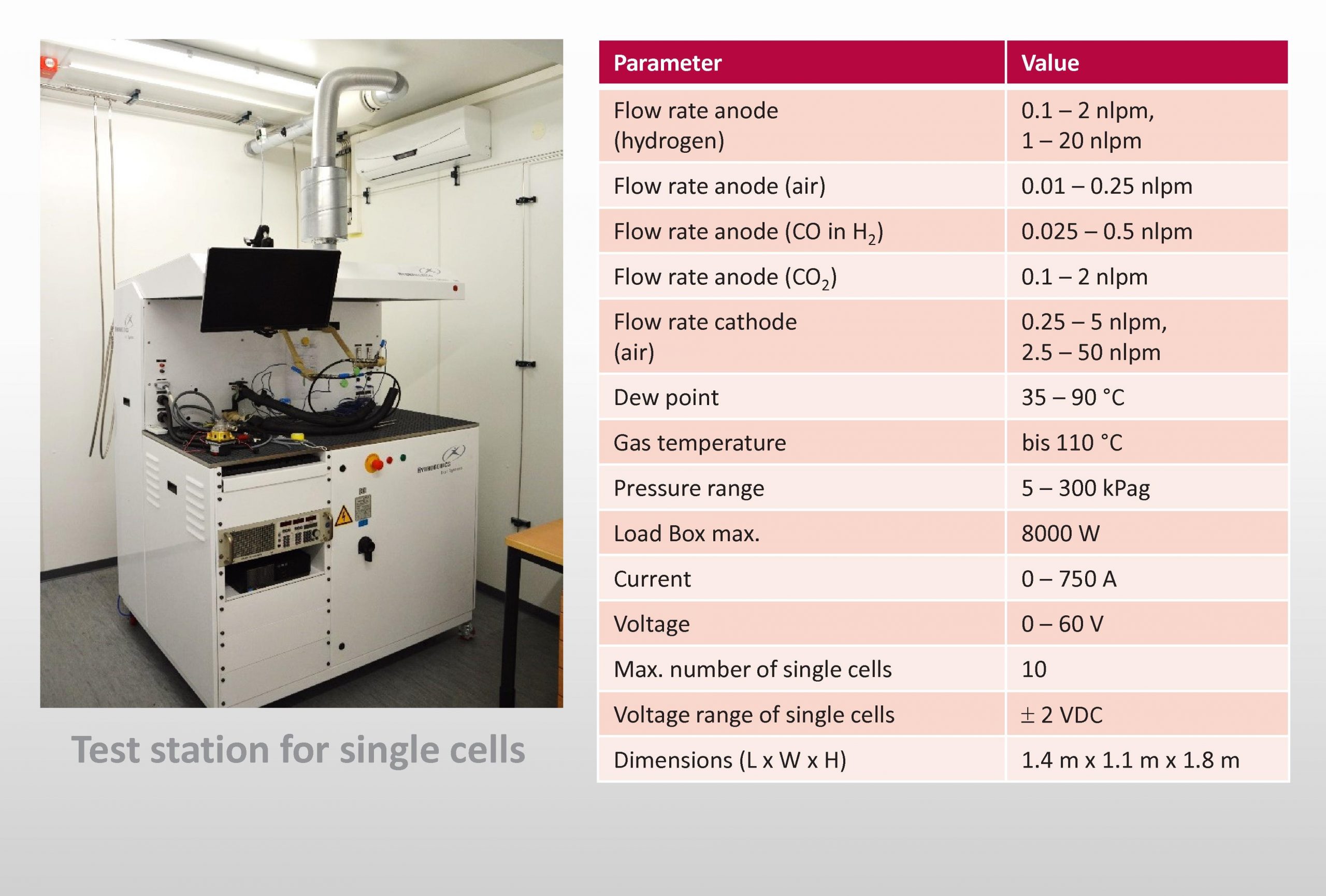
Test Station for Fuel Cell Stacks
The G500 test station by Greenlight Innovation allows us to analyze fuel cell stacks of up to 70 cells. The following table provides an overview of the properties of the test station.
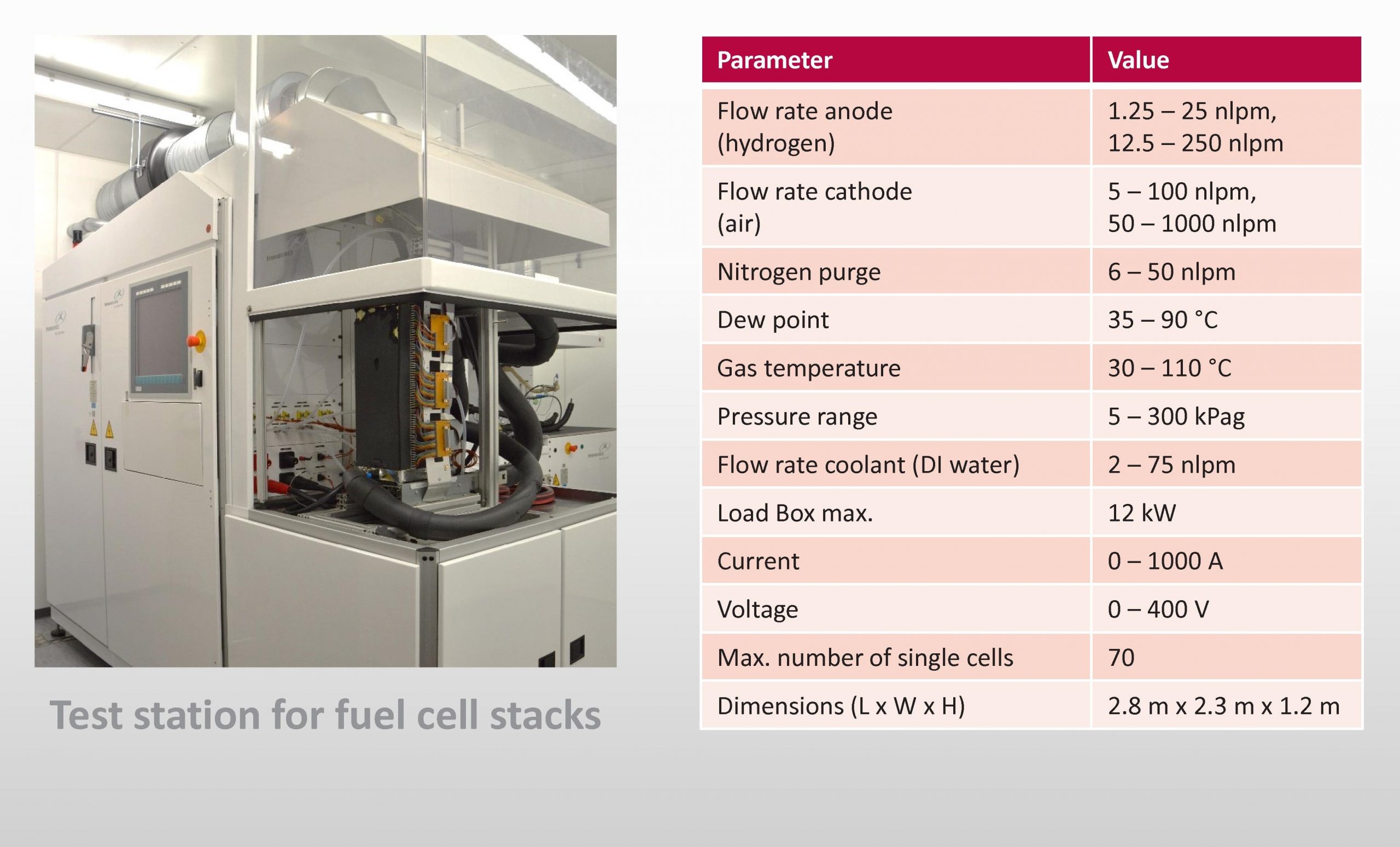
Additional Equipment
Hot Press
In order to manufacture our very own membrane electrode assemblies, we employ the Polystat 200 T hot press, which has the following parameters.
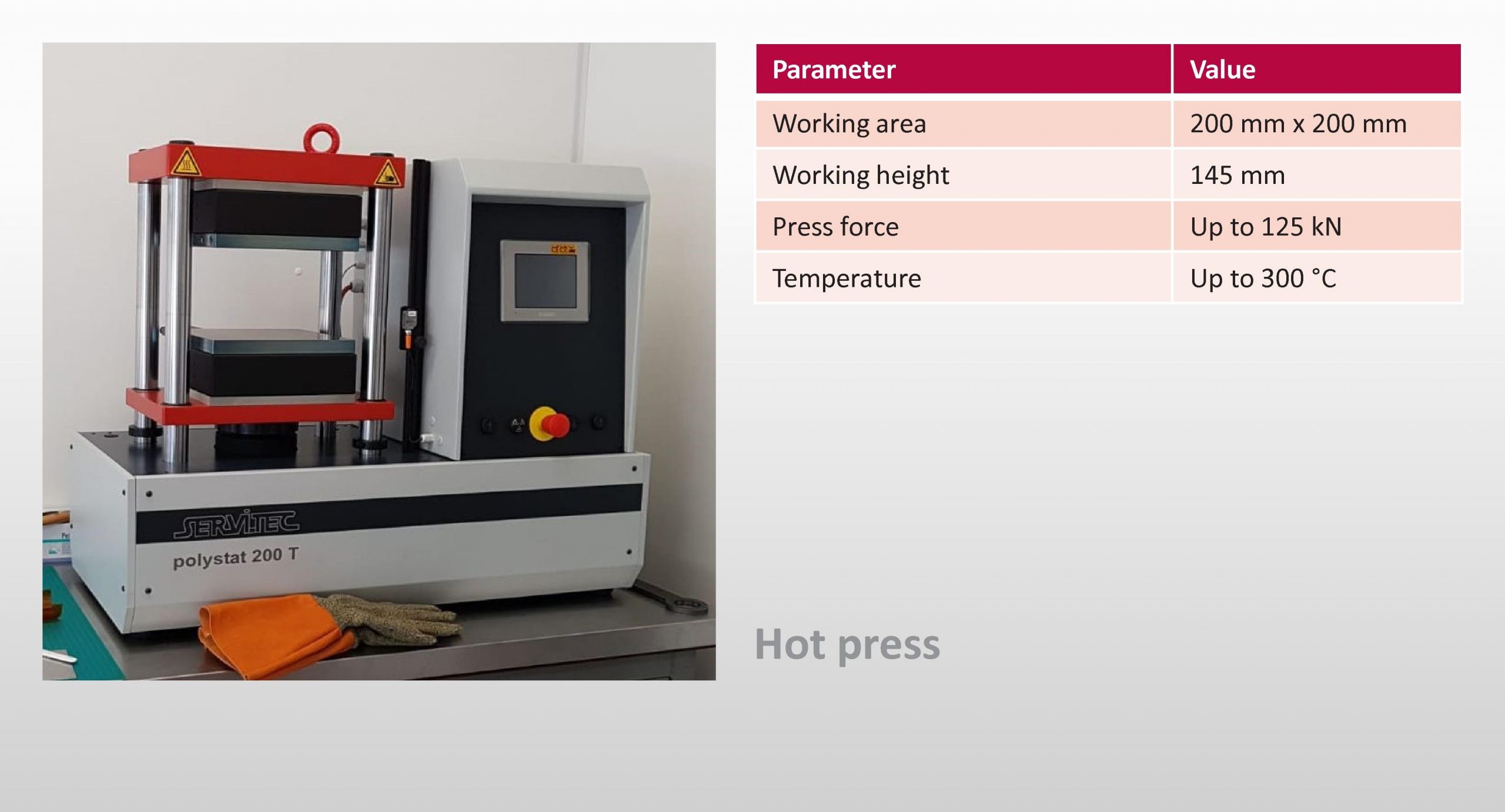
Test Housing for Single Cells
The quickCONNECT fixture enables us to assemble electrodes, gas diffusion layers, membranes, as well as entire membrane electrode assemblies under non-varying conditions making investigations reliable and reproducible. Fuel cell assemblies featuring active areas of 25 cm², 100 cm², and 225 cm² can be investigated with the latter two also allowing analysis of the distribution of both current density and temperature.
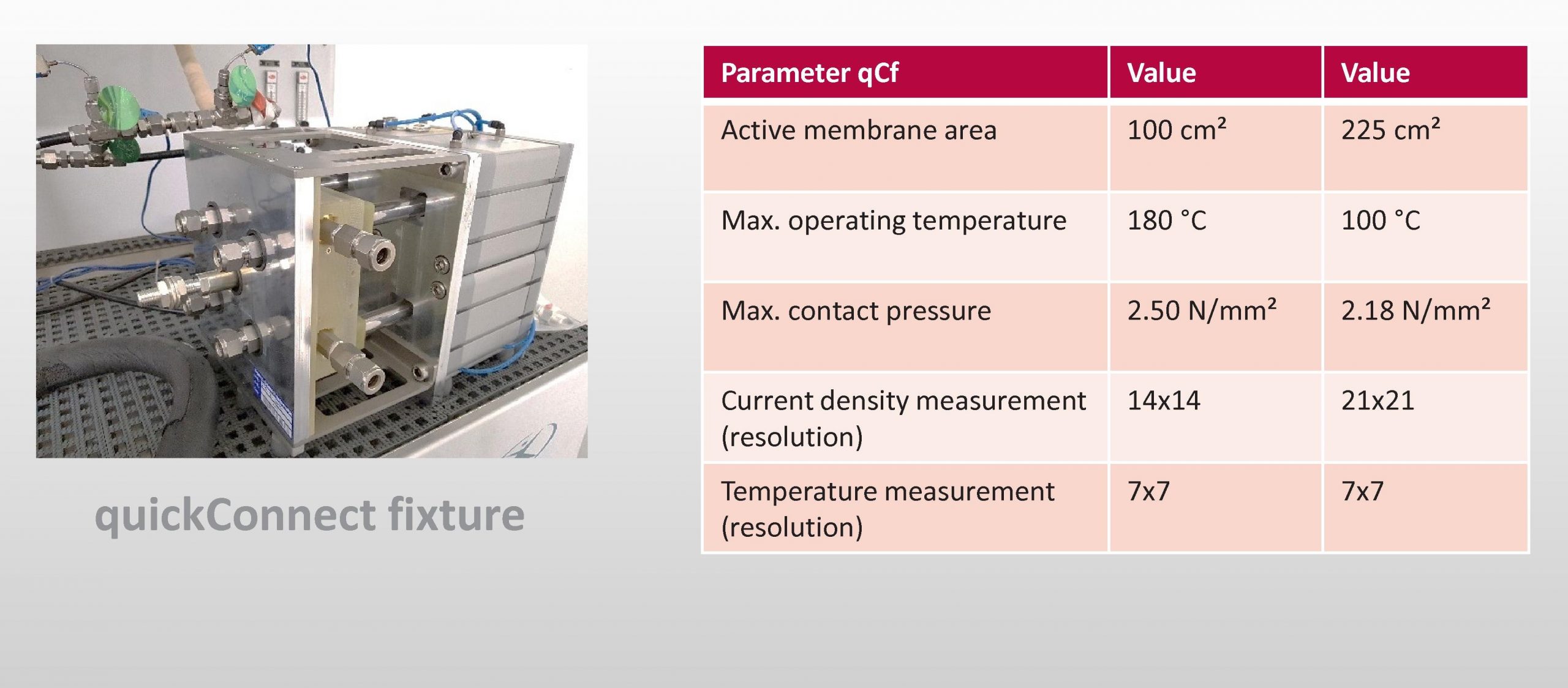
Galvanostat/Potentiostat
The galvanostat/potentiostat Reference 3000 AE is a special measurement device commonly used in the field of electrochemistry. We use it for investigations such as electrochemical impedance spectroscopy (EIS) and the current interrupt (CI) method. The additional current amplifier Reference 30k Booster allows for a simultaneous investigation of multiple cells within one stack. The parameters of the Reference 3000 AE with and without the current amplifier are listed below.
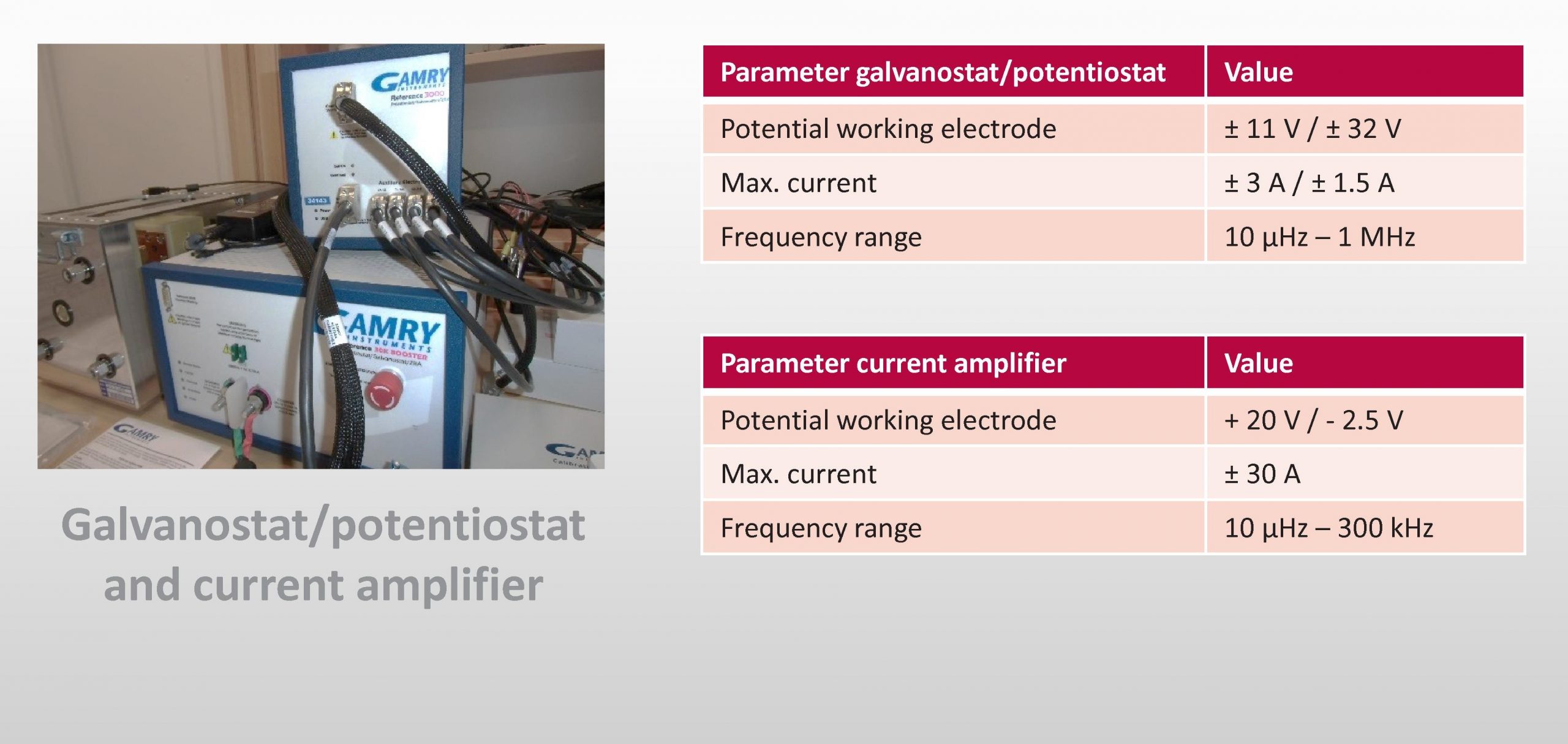
Letzte Änderung: 14. April 2021
